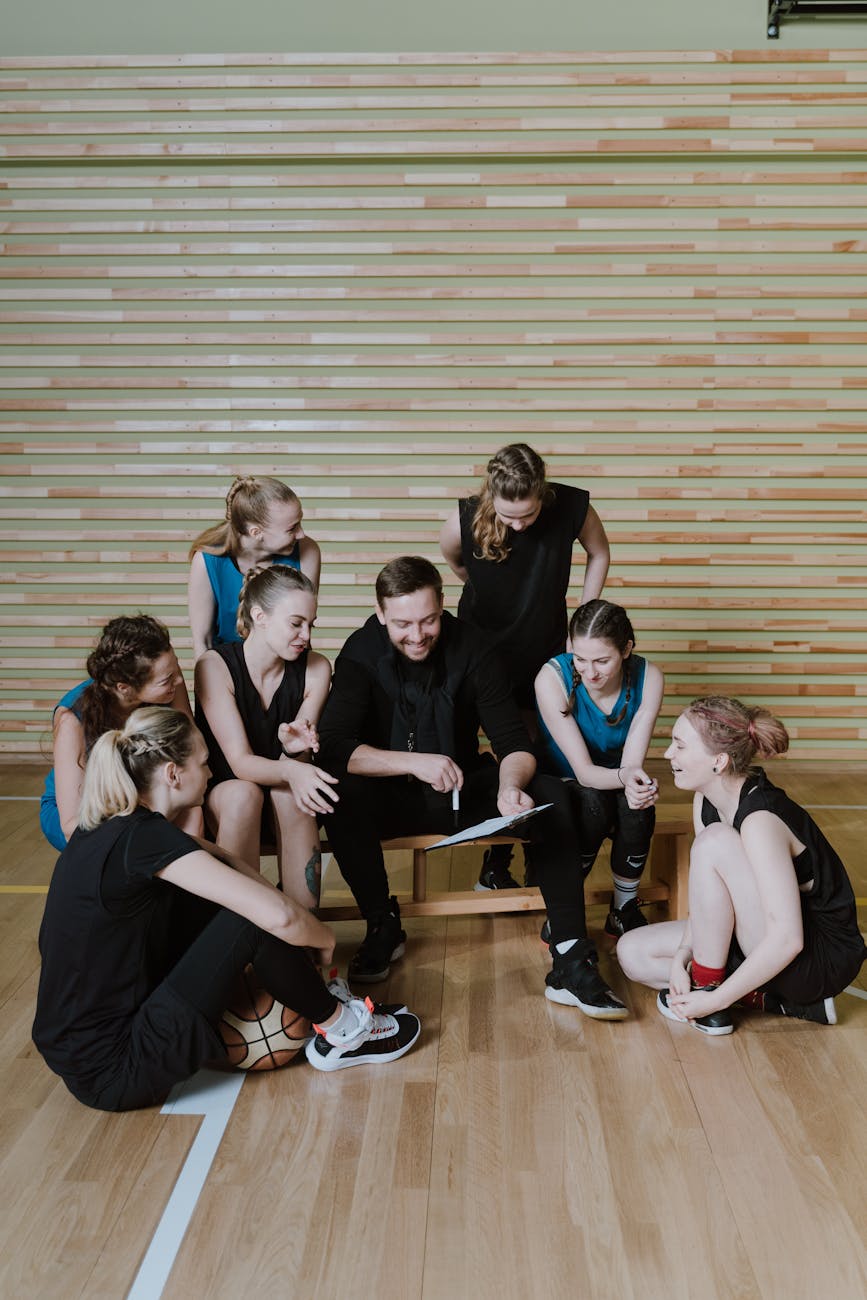Lessons from a Lifetime of Teaching series, Part 3
“The road to success is not a path you find, but a trail you blaze.”–Robert Breault
Author’s Note: This is the third installment of stories from decades of teaching students grades K-12. It is my hope that by sharing these stories, I will cultivate lessons of compassion, empathy, and understanding.

Coaching requirement ⛹️♀️
My educational career began at a rural Kentucky high school. I was one of five special education teachers. One of the requirements for teaching at this high school was coaching a team in some capacity. Therefore, I assisted with the women’s cross country and track teams.
At the time, I didn’t know a thing about either sport, but the head coach of the cross country team was another special education teacher, Coach Bailey (name changed for privacy). I didn’t realize it when I first met him, but in the end, Bailey became a role model for me as an educator and coach.
As luck would have it, our classrooms were side by side, divided only by a rolling chalkboard. In the two years I worked with “Coach,” as everyone called him, I rarely heard him raise his voice, and if he did, you can bet he had a darn good reason. Mostly, Coach was a naturally soft-spoken man who could both nurture and challenge students and athletes alike.

Meet the Coach 🏃♀️
Coach, in my mind, was “older” with salt and pepper straight hair parted down the center and a thick mustache. His face was browned and weathered from years spent in the sun that contrasted his light aquamarine eyes. His typical attire was khakis with a school logo polo shirt with a matching ball cap–the cap was only for sporting events. When the temperatures turned cold, he added a school logo v-neck polyester pullover that was popular with coaching staff in the late 80s.
On our first meeting, Coach gave me a tour of the “department facilities,” such as they were. Three of the five special education classrooms were underneath the visitor side of the gym bleachers, and the other two classrooms were found at the end of the gym, just beyond the baseline. As we walked, he politely introduced me to the faculty and staff we encountered.
Later, when Coach discovered I had been assigned to “assist” him with the cross country team, he did not roll his eyes, sigh, or mutter under his breath upon hearing I had no coaching experience, which I feared he would do. Instead, he said he was glad to have me as part of the team because the young ladies needed a female leader.

Ladies Cross Country Team 🏃♀️🏃♀️
He then explained that the cross-country team had already begun practicing and invited me to join them that afternoon. It was then he asked if I ran. Not wanting to disappoint him, I said that I did, which was sort of true. I had begun jogging during my last quarter of college just before graduating. I continued to jog two-three days per week around town after moving in with my grandparents that same summer, but I was by no means fast or knowledgeable about running beyond the basics. I knew I would have much to learn.
By 3:00 pm, I was on an access road along the Ohio River meeting the team. As Coach introduced me to the young ladies, they welcomed me with warm smiles. As the weeks progressed, I would come to love these ladies, especially for the mature way they approached running, academics, and life in general. They were a driven group with gritty spirits, and they supported one another throughout the season even though they were competitors in races.
During this first practice, I learned that my job was to run, jog, or walk with whoever was at the back of the pack during the team’s long training runs while Coach rode his bike with the girls at the front of the group. I was worried because I did not know if I had that level of fitness to keep up with even the so-called “slowest” runner.

The IMportance of Grit 💪
It turned out that there were two ladies who had joined the team with no running experience. Coach already knew they were not yet able to keep up with the other seasoned runners. Therefore, he asked that I remain steadfastly encouraging. It was a role I relished.
As the season progressed, one of the two newer runners was a “natural,” and was soon running with the rest of the team. But Coach still insisted that I mostly focus on helping “Amy,” the runner who still struggled. He shared that while winning races was nice, developing stamina and perseverance were lifelong skills applicable to many settings, not just running.
Throughout the cross country season, Coach fostered a team attitude of, “You’re only in competition with your best time.” His coaching style was gentle, but firm; supportive, but with high expectations. However, those expectations were individualized to each runner, including Amy. This philosophy was most evident after the regional meet.

Individualized Success 🏅
We had two runners who finished in the top spots who qualified to move on to the sectional meet. While Coach was happy with those two and praised their efforts, he also pointed out a few techniques they could use to improve their times for the next race.
Additionally, since it was the last meet for the rest of the team, Coach took time to speak to each of the runners, showing them their running times from those hot days of August until the end of October. All team members had improved significantly, and he made sure each runner knew how much they had achieved over the season. Coach conveyed heartfelt pride in each lady’s accomplishment, and he encouraged each one to run track in the spring.
Later, I watched Amy, who was always the last finisher for our team, walk over to her parents and chatter away about her improved times and how she couldn’t wait for spring track season.

Nudges of Success 🙌
Coach taught his students in the same manner in which he coached. His expectations were high, but his capacity for compassion and empathy was deep. Coach was attentive and intentional when talking with students and athletes alike. He could be firm when needed, but mostly, he taught and coached with a gentle, kind, and encouraging spirit.
How fortunate was I to have taught with Coach for two years. He modeled that effective teaching–and coaching–is about the importance of each student–how you make them feel and the impact of motivating students to improve and stretch to be better versions of themselves. Every student’s best is different, and it is the job of a teacher and/or coach to see this and purposefully nudge each student forward to the next level in order for students to blaze their own trail of success.
